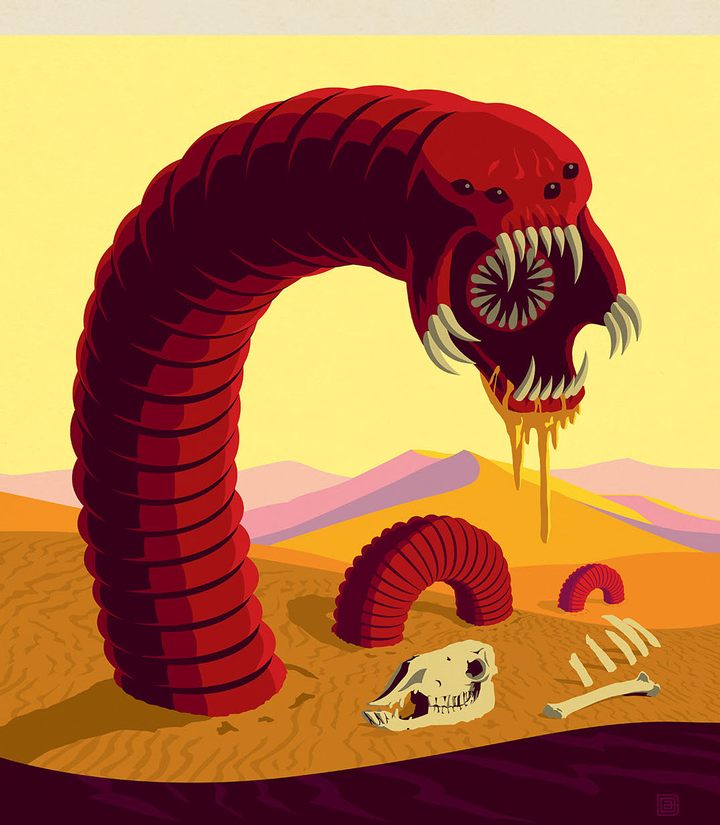
Inside the Decades Long Hunt for the Mongolian Death Worm
Some say the true death worm has already been found—slithering beneath the sands of the Gobi.
In July 1990—weeks after the end of Mongolia’s democratic revolution and as the country began to open up to the wider world—four Czech guys caught a flight to Ulaanbaatar, found a Soviet ATV and a couple of guides, and made a beeline for the most remote corners of the Gobi Desert. Their goal: Find the region’s resident cryptid, the olgoi khorkhoi, a.k.a. the Mongolian death worm.
Initially, they planned to bait traps with the worm’s favorite foods. But locals didn’t know its diet. So they took a page from Dune, jerry-rigging a “thumper” in hopes its rhythmic pounding would summon the burrowing beasts. For two months, they crisscrossed the desert, in what prominent cryptozoologist Karl Shuker characterized in a blog post as a “diligent, groundbreaking” monster hunt.
The death worm was an odd target for such an ambitious expedition. It’s a particularly implausible cryptid, supposedly growing up to six feet long, spitting acid poison that rapidly corrodes anything and kills on contact, and possibly shooting electricity. And yet, the worm has never left any physical evidence. The mystery of its existence was also seemingly solved in 1983 when a Soviet scientist demonstrated that the “worm” likely evolved from legends around a harmless local snake, the Tartar sand boa.
Yet this expedition wasn’t a one-off. Ringleader Ivan Mackerle, an automotive designer-turned-adventurer who spent much of his life delving into the paranormal and hunting cryptids, launched two more quests for the worm: One in 1992, using small explosives instead of a thumper. And one in 2004 that used a small aircraft to survey the dunes and scrublands. In the years since, teams of Americans, Brits, and Kiwis have launched several major expeditions in search of the worm, and folks from across the world have journeyed to the Gobi to conduct small, personal searches, too.
The effort monster hunters pour into searching for a seemingly debunked beast may baffle outsiders. But it reflects two simple truths: (1) A good cryptid is more than a creature, so you can never catch or debunk it. (2) The hunt is often less about finding a monster, and more about the thrill of nature and exploring the unknown.
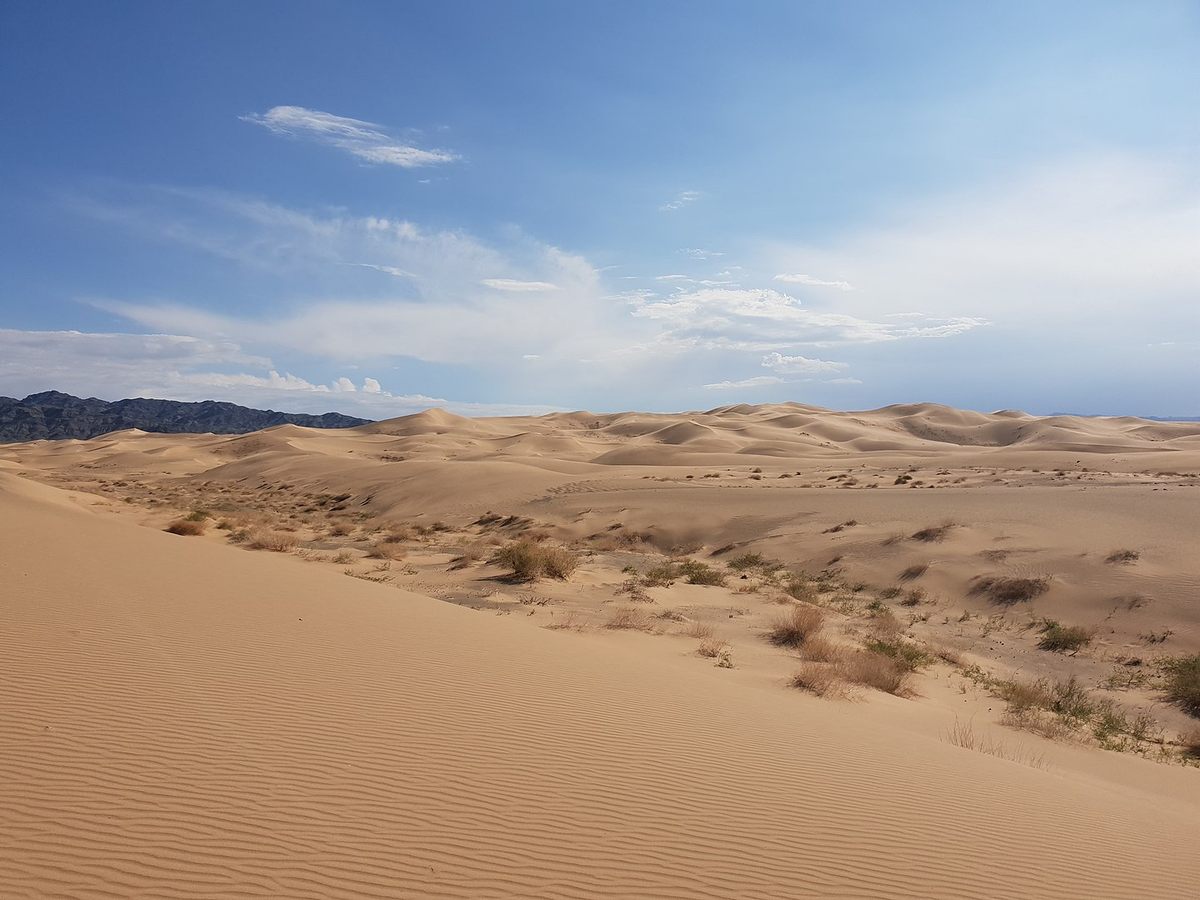
Ágnes Birtalan, an expert on Mongol languages and folklore at Hungary’s Eötvös Loránd University, says oral traditions about the olgoi khorkhoi may go back generations. But the creature first appears in writing in the 1920s, in “real-life Indiana Jones” Roy Chapman Andrews’s accounts of his Gobi expeditions. He recalls meeting top state officials in 1919 to request work permits, only for a minister to ask, “if it were possible, [that] I should capture for the Mongolian government a specimen of the allergorhai-horhai.”
“None of those present ever had seen the creature,” Andrews wrote, “but they all firmly believed in its existence and described it minutely.” He agreed to keep an eye out—and use metal tongs and protective goggles when approaching it. By 1932, he’d encountered many secondhand stories about the worm, but no firsthand accounts—much less a specimen.
A.D. Simukov and Ivan Yefremov, Soviet scientists who worked in the Gobi in the 1920s and 1940s, respectively, recorded numerous tales about the worm as well. But early reports seemingly only agreed on a few core facts: The worm was sausage-like, mostly subterranean but would surface for food or following rains, and incredibly deadly. If you saw it, you kept your distance or ran.
In some stories, the worm is only about a foot long. In others, it’s man-sized. It sweeps across the sands like a snake, inches like a caterpillar, or (in one tale) sprouts wings from its butt and flies. It’s white-gray, turning red when perturbed. Or scaly and brown. Or fleshy and blood-red.
In the mid-20th century, the Mongolian communist regime reportedly banned research or talk of the worm, which made it difficult to probe and sort these jumbled tales. But Sandra Fay, who’s published a kids’ book about the olgoi khorkhoi, points out that the worm’s hodgepodge characteristics make the creature more compelling. Fans wildly speculate that the death worms may have influenced everything from Dune’s shai-hulud to Tremors’ graboids to Tolkien’s lore, which mentions giant were-worms in the east. They certainly influenced Yuri Gorelov, a conservationist who occasionally worked in the Gobi in the 1970s and 1980s.
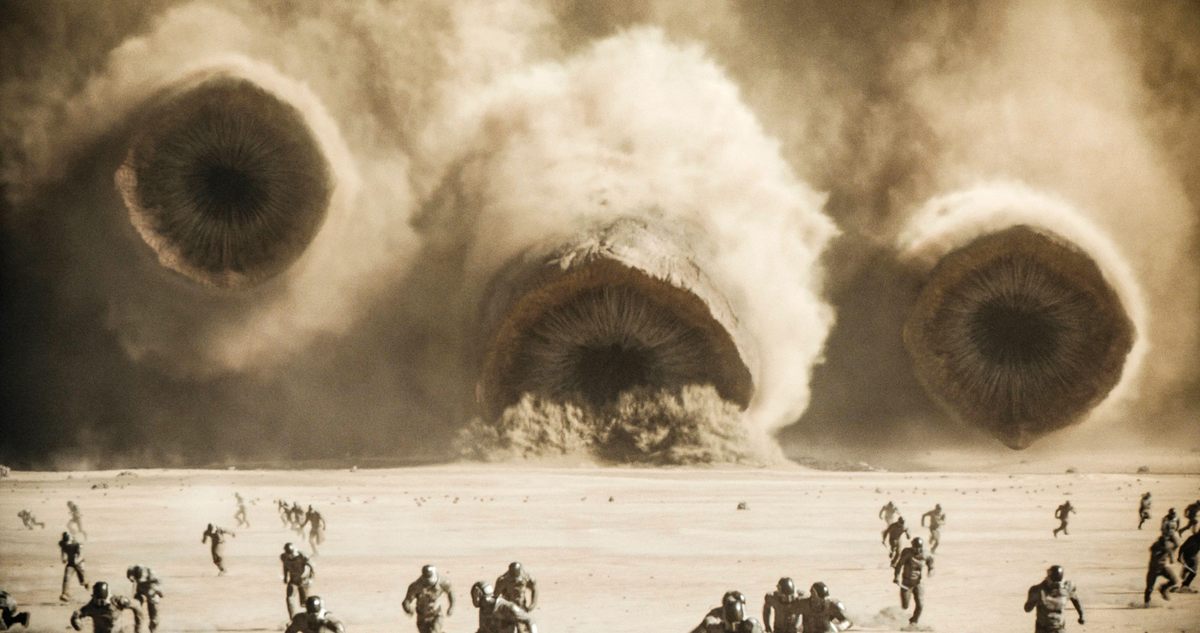
For years, Gorelov and a team of collaborators batted around ideas about what real-life animal might have inspired the worm. Then in 1983, while in the region, they heard about an old man who’d supposedly captured one. They went out to talk to him and learned a nest was supposedly nearby. Gorelov ran out to investigate and saw movement in a hole. Ignoring cries of concern, he thrust his hand in and came out with a Tartar sand boa—a chunky, burrowing, non-venomous snake with a rounded head, small eyes, and gray-brown scales. All the Mongols he showed it to in the area reportedly identified it as an olgoi khorkhoi.
This identification makes sense to folklorist Birtalan, who explains that, while khorkhoi translates to “worm,” it’s a “taboo name” that many Mongol cultures historically used to refer to animals they considered metaphysically or literally dangerous, especially snakes—even non-venomous ones.
Birtalan knows of another Mongol scientist in Inner Mongolia who likewise showed a sand boa to locals. Those locals also identified it as an olgoi khorkhoi. Citing these findings, even some cryptid-enthusiast forum users consider the worm debunked.
But this sort of evidence rarely sways locals who grew up with a cryptid, explains David Puglia, a folklore researcher at the City University of New York. Cryptid “beliefs are not solely based on empirical evidence,” he says. “Cryptids serve as cultural symbols, embodying fears, curiosities, and mysteries of nature.”
A cryptid’s characteristics may stem from tales of strange encounters with misunderstood mundane animals, especially in extreme or isolated environments, adds Joseph O. Baker, an academic at East Tennessee State University who studies belief in myths, monsters, and the paranormal. (A good encounter tall tale is “culturally sticky,” he adds—fun to retell and merge into similar stories.) However, these folktales get so ingrained that a foreign scientist getting chummy with a boa can’t shatter them. And at some point, Birtalan adds, the worm was “not connected to snake lore anymore.”

“Nobody knows what they are,” a man in Dalanzadgad, one of the Gobi’s few urban hubs, told Yefremov in the mid-1940s. “But the olgoi khorkhoi is horror,” an abstract dread. Similarly, in 1992, Mackerle met a shaman who supposedly told him that the worm “is not a living creature of flesh and blood,” but “a supernatural evil being. [A] demon of the desert.” The shaman warned Mackerle not to violate local taboos, lest he incur the worm’s wrath.
“Most people know about the olgoi khorkhoi,” adds Bulgan Luvsandorj, one of the entrepreneurs and cultural ambassadors behind the online Mongolian crafts storefront Mongulai, which recently published an article on their website about the worm. Today, “80% of them [Mongolians who know about the worm] believe in it.”
Gorelov’s conclusion that the worm was a Tartar sand boa didn’t sway cryptid diehards either. As Mackerle once put it, true believers think “it’s certain that such a legend could not have arisen around some well-known animal such as a snake. Mongolian herders know him [local snakes] all too well.”
People like Shuker, Mackerle’s longtime correspondent and fellow olgoi khorkhoi enthusiast, reject the idea the worm could be (rooted in) a sand boa specifically. It doesn’t match the legends well enough, he argued in his 2003 book The Beasts That Hide from Man—legends, Birtalan points out, that outsiders increasingly shape.
Most cryptozoologists credit Mackerle with introducing the wider world to the olgoi khorkhoi, through his expedition reports and documentaries—thus codifying diverse local tales into a cogent monster narrative. While many local, firsthand accounts describe the death worm as brown and scaled with tiny eyes, cryptid lovers worldwide now argue a real-world worm correlate ought to match the red, fleshy, eyeless depiction found in Mackerle’s works.
In one report, Mackerle insisted (as cryptid hunters often do) that “we are left with only one explanation. [The worm] is a completely unknown relict creature”—one that needs finding.

Sometimes, the need to find a mythic creature like the worm stems from “what we might call an ‘enchanted worldview,’” Baker explains, or a desire “to show the official narrative is wrong.”
More often, “the human fascination with the possibility of undiscovered creatures” motivates cryptid hunters, says Puglia. “The search for cryptids is often motivated by a mix of curiosity, adventure, the desire for discovery, sometimes fame or validation, and certainly the allure of the unknown and the human drive to explore and understand the mysteries of the natural world.”
“I wanted to stay in my dreams with these adventures,” Mackerle told The Prague Post in a 2007 interview, six years before his death. “Mainly, [I do expeditions] for the love of adventure. Naturally, I’d like to make a discovery, but it’s very difficult to find something new. But still, it’s exciting to go through the countryside with machetes, to drive through the desert meeting people to talk about mysteries.”
After a life of fruitless searches, Mackerle admitted to the Post he’d grown “more skeptical about everything,” including the worm. He had no plans or desire to return to Mongolia.
But “the Gobi is so vast and ill-explored, it probably holds many secrets,” says Richard Freeman of the Center for Fortean Zoology, a British cryptid research group that has organized several monster hunts. That aura of wild mystery and natural possibility alone is enough to draw folks to the region hoping to find something of the olgoi khorkhoi beyond Gorelov’s boa. (For his part, Freeman believes the worm is likely a mundane creature mixed up with myths—but he’s also almost certain that an unknown reptile species better fits those myths.) Whether or not anyone who has ventured out before them has had any success in that quest is beside the point. The potential that they might succeed endures.

Freeman and three CFZ associates organized their own expedition in May 2005, commissioning art of the worm and hiring locals to distribute flyers offering a reward for info or specimens across the Gobi ahead of their arrival. They thought Mackerle’s thumps and booms were misguided—more likely to scare than summon creatures. So, they planned to dam streams to create the wet conditions that supposedly draw worms out. Those plans fell apart when faced with logistical hurdles, forcing CFZ to set small traps instead.
Despite their ambition, the CFZ team found no evidence of the worm. They did collect several firsthand stories of encounters from 1930 to 2004. Most of which describe short, brown-scaled, boa-like creatures.
From an outsider’s perspective, Freeman’s grand expedition may seem like another dud, supporting the idea that the worm is a legend spun from sand boas. But to monster hunters, it’s just another inconclusive building block for the next big expedition—part of a larger overall quest that will continue until someone eventually finds the great secret hiding in the unknown desert.
“I would love to return someday,” says Freeman. But when he tried to organize another search, the price tag for guide services had skyrocketed. Demand for worm hunts, it seems, is thriving.

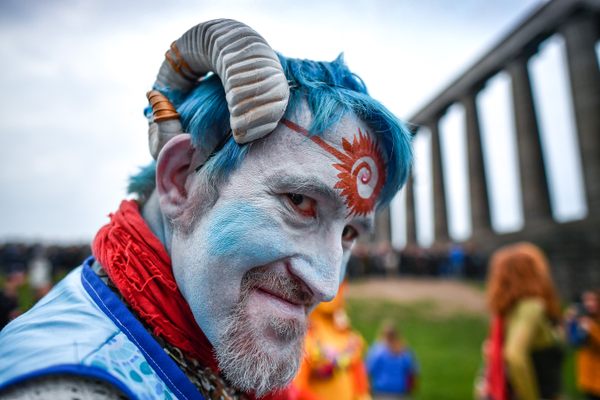
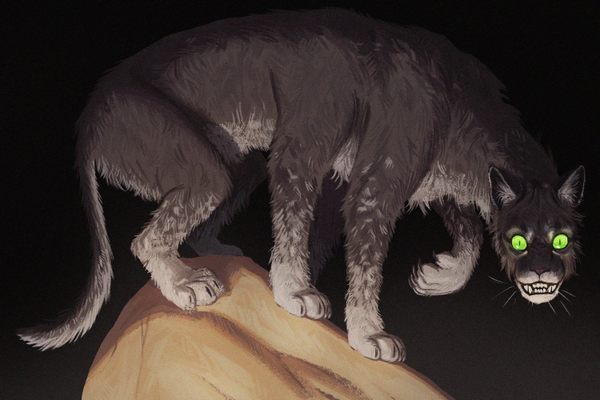

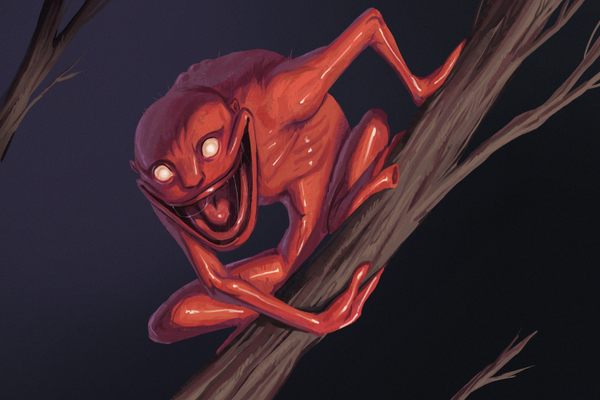
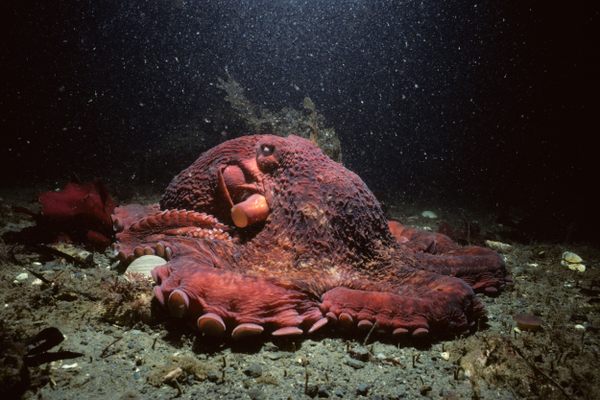






Follow us on Twitter to get the latest on the world's hidden wonders.
Like us on Facebook to get the latest on the world's hidden wonders.
Follow us on Twitter Like us on Facebook